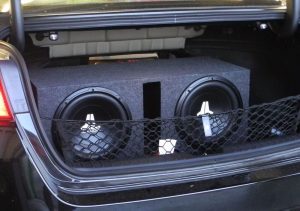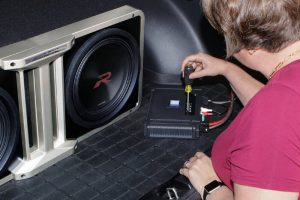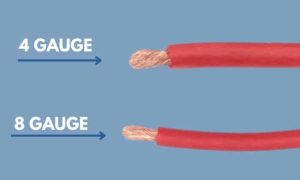Are you a music lover who enjoys cruising down the highway with your favorite tunes playing? Or maybe you just want to make your daily commute more enjoyable with high-quality audio. Either way, you might have found yourself wondering, “What speakers are in my car?” Understanding the speakers in your car and their sizes is essential if you want to upgrade your car’s audio system effectively. In this informative guide, we’ll walk you through the process of identifying your car’s speakers and determining their sizes, ensuring you make the right choice when upgrading your car stereo speakers.
Contents
How Do I Know What Speakers My Car Has?
Identifying the speakers in your car may seem like a daunting task, but it’s actually quite manageable. Here are some methods to help you discover what speakers your car has:
Consult Your Vehicle’s Manual
Your car’s manual is often an excellent place to start. It contains valuable information about various components of your vehicle, including the audio system. Check the section that discusses the car’s specifications or features. You may find details about the brand and model of the speakers installed in your vehicle.
Inspect the Speakers
Another method is to physically inspect the speakers in your car. This requires a bit of hands-on work, so be prepared. Follow these steps:
a. Carefully Remove the Speaker Covers or Grilles – Speaker grilles or covers are usually held in place with screws, clips, or adhesive. Use the appropriate tools to remove them without damaging the speaker or the interior of your car.
b. Look for Labels or Markings – Once the speaker is exposed, look for labels, markings, or engravings. Speaker manufacturers often provide information about the speaker’s specifications, such as its size, power handling, and impedance.
Online Research
The internet can be a treasure of information. Use online resources such as car audio forums, manufacturer websites, or VIN (Vehicle Identification Number) decoders to gather information about the speakers installed in your specific car model. Many websites and forums have dedicated sections where users share their experiences and details about their car’s audio systems.
How Do You Know What Size Speakers You Have?
Determining the size of your car’s speakers is crucial if you plan to upgrade or replace them. Here are the steps to find out what size speakers you have:
Measure the Speaker Diameter
The most direct method is to measure the diameter of the speaker cone. You can do this by following these steps:
a. Remove the Speaker Grille – Just as you did when identifying the speakers, carefully remove the speaker grille to access the speaker cone.
b. Measure the Diameter – Use a measuring tape or a ruler to measure the diameter of the speaker cone. Be as accurate as possible, and round to the nearest fraction of an inch or millimeter.
c. Common Speaker Sizes – Common speaker sizes include 6.5 inches, 6×9 inches, 5.25 inches, and others. Note down the size you’ve measured.
Check Your Vehicle’s Manual
As mentioned earlier, your car’s manual can be a valuable resource for speaker size information. Look for specifications related to the audio system. In many cases, the manual will provide details about the size of the speakers installed in your vehicle.
Use Online Databases
Several online databases and tools can help you identify the speaker sizes in your car. They often allow you to input your car’s make, model, and year to find detailed information about the factory-installed speakers. Websites like Crutchfield and Sonic Electronix provide such resources, making it easier to determine the size of your speakers.
Why Speaker Size Matters
Understanding why speaker size matters is crucial when upgrading your car’s audio system. Speaker size directly affects the audio output and listening experience in your car. Here’s why it’s essential:
- Bass Response: Larger speakers, typically 6×9 inches or larger, are better at reproducing deep bass frequencies. If you enjoy powerful, thumping bass in your music, larger speakers are a good choice.
- Midrange and High-Frequency Sounds: Smaller speakers, like 5.25 inches or 6.5 inches, are more proficient at producing clear midrange and high-frequency sounds. These speakers are crucial for detailed vocals and instruments.
- Balance: The right speaker size ensures a balanced audio experience in your car. A combination of appropriately sized speakers can provide a full spectrum of sound, from deep bass to crisp treble.
Upgrading Your Car Stereo Speakers
If you’re looking to improve your car’s audio quality, upgrading your speakers can make a significant difference. Here are the steps to follow when upgrading your car stereo speakers:
Research Compatible Speakers
Once you’ve identified your car’s speaker sizes and know what you’re working with, it’s time to research compatible aftermarket speakers. Consider factors like speaker sensitivity, power handling, and impedance to find speakers that will work well with your car’s audio system.
Choose Quality Brands
When selecting aftermarket speakers, opt for reputable brands known for their durability and sound quality. Some well-regarded manufacturers include Pioneer, JBL, Alpine, Kicker, and Kenwood, among others. Reading reviews and seeking recommendations from car audio enthusiasts can help you make an informed decision.
Professional Installation
While some car audio enthusiasts may choose to install speakers themselves, professional installation can ensure proper wiring and mounting, maximizing the performance of your new speakers. Many car audio shops offer installation services, and they can also help you fine-tune your audio system for optimal sound quality.
Conclusion
Knowing what speakers are in your car and understanding their size is the first step toward achieving an exceptional in-car audio experience. Whether you’re a music aficionado or simply want to enjoy your daily commute with superior sound, these insights will help you make informed decisions when upgrading your car stereo speakers. Remember, the right speakers can transform your driving experience, making every journey more enjoyable. So, take the time to identify your speakers, choose the appropriate size, and treat yourself to the audio quality you deserve.






